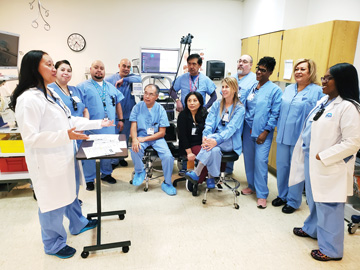• Navigate. The third step of the CONNECT is essentially your road map. Where do you go for answers? In revisiting our monitor example, the charge nurse had to navigate our equipment purchasing protocols, the vendor-quoting
process and all that’s needed to effectively make the case for implementing the idea brought up in the communication stage. This is where your staff is gathering evidence, pulling together resources and collecting the information they
need to show there’s a ROI to making their suggested change.
• Negotiate and Engage. These two steps are combined because they generally go hand in hand; you can’t negotiate with someone who isn’t engaged. Once you have everything you need to support an idea, you must get
buy-in from the top decision-makers. When it comes to equipment purchasing, for instance, you must justify why you need what you’re asking for.
• Collaborate. While you want your staff to be the driving force behind any idea they suggest, at some point the process becomes collaborative. Our charge nurse had to work with the monitor vendor, our supply managers (because
they’re ultimately the ones who will send in the purchase order) and the rest of the clinical team. As a surgical leader, you need to be there to facilitate smooth interactions between the various groups to ensure collaboration occurs.
• Teach. The final step in our shared governance model is arguably the most important. No matter how much effort you put into an idea, it won’t come to fruition if your staff isn’t properly trained or doesn’t
buy into the process. That’s the beauty of shared governance. Who better to train your staff on the intricacies of a new process or piece of equipment than one of their peers?
Whenever you can get one of your frontline nurses or techs to take an idea and run with it, the effect is contagious. There’s a lot of research showing that when staff are allowed to come up with their own solutions, they will own the results
and become an outspoken cheerleader in the department for that change. Once other staff see this, they will bring their own ideas to the table. This is ideally how you want your facility to run. In surgery, leaders are often more like spectators
than players. Your staff has the best ideas, they know what’s worked, what hasn’t and all the key details. It’s up to you to provide the support they need to bring those ideas forward — and a well-defined shared-governance
process is a proven way to make it happen. OSM
.svg?sfvrsn=be606e78_3)

.svg?sfvrsn=56b2f850_5)